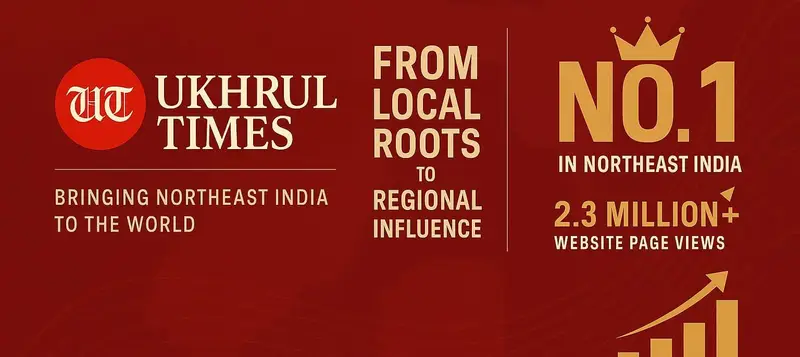Now Reading: Yimkhung Union Kohima Celebrates ‘Tsakran Nyan’ Festival, Honoring Cultural Heritage
-
01
Yimkhung Union Kohima Celebrates ‘Tsakran Nyan’ Festival, Honoring Cultural Heritage
Yimkhung Union Kohima Celebrates ‘Tsakran Nyan’ Festival, Honoring Cultural Heritage

Kohima, September 7: The Yimkhung Union Kohima celebrated the “Tsakran Nyan” festival, an important cultural event for the Chirr-speaking dialect of the Yimkhiung Naga tribe, at the State Academy Hall in Kohima on September 7.
The event was themed “Reminiscing our cultural heritage” and featured Kiusumew Yimkhiung, the Advisor for Fire & Emergency Service, as the special guest.
Other notable speakers included S. Keoshu, the Advisor for Youth Resources & Sports; former village council chairman Salomi village Shophu; finance secretary of Yimkhiung Tribal Council and Vipopal Kintso former chairman of Kohima Municipal Council and various former and current tribal leaders.
Must read | FNR-RRAD September Dialogue: Creating a pathway towards the future
Significance of ‘Tsakran Nyüng‘
“Tsakran Nyüng” is a three-day festival celebrated in the first week of September, after the millet harvest. The name itself is deeply symbolic: “Tsak” refers to all kinds of grain, “ran” is a shortened form of “rhanvuh,” meaning harvest prospect, and “nyüng” means festival. The festival serves as a thanksgiving ceremony and a prayer for a bountiful harvest.
The Celebration
Preparation: The festival is announced four days in advance by a village elder, allowing the community time to prepare. Men clean the community pond and collect necessary materials, while women gather essentials from the fields. The village is cleaned to ward off sickness and protect against enemies.
First Day (Kintoh): Animals are slaughtered, and the meat is distributed among the community. A ritual called “Pongmhe mhüt” is performed by the head of the family or clan, involving the offering of rice beer and a piece of liver to invoke blessings. This day is mostly celebrated within families.
Must read | CM N Biren Singh to Resign if Denied Unified Command Authority?
Second Day: Community members invite each other for a communal feast, where they enjoy rice beer, freshly prepared bread made from sticky millet, and other delicacies. They go around the village in groups, singing songs of praise, strength, and unity.
Third Day: Invitations are extended to those who were missed on the second day, including maternal relatives, widows, widowers, and the destitute. In the evening, couples discuss the possibility of hosting or reciprocating the “Feast of Merit” (Nyingthseh) based on the current year’s harvest. This feast is of various types, including feasts for the entire village, for strengthening friendships, and for exhibiting wealth and strength.
Following the festival, the community collectively clears the paths leading to the fields, and the next day is observed as a day of rest, with everyone staying within the village.
Also read | ANSAM, TKLI Urges SSC and Manipur Governor to Reinstate SSC Exam Centre in Ukhrul District













